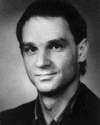
Born 20 Jul 1947.
German physicist who co-invented the scanning tunneling microscope with Heinrich Rohrer. They shared the 1986 Nobel Prize for Physics with Ernst Ruska, who designed the first electron microscope. This instrument is not a true microscope ( i.e. an instrument that gives a direct image of an object) since it is based on the principle that the structure of a surface can be studied using a stylus that scans the surface at a fixed distance from it. Vertical adjustment of the stylus is controlled by means of what is termed the tunnel effect - hence the name of the instrument.
German physicist who co-invented the scanning tunneling microscope with Heinrich Rohrer. They shared the 1986 Nobel Prize for Physics with Ernst Ruska, who designed the first electron microscope. This instrument is not a true microscope ( i.e. an instrument that gives a direct image of an object) since it is based on the principle that the structure of a surface can be studied using a stylus that scans the surface at a fixed distance from it. Vertical adjustment of the stylus is controlled by means of what is termed the tunnel effect - hence the name of the instrument.
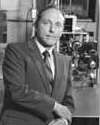
Born 20 Jul 1924.
American research physicist, who with his colleagues at Corning Glass Works, Dr. Donald B. Keck and Dr. Peter Schultz invented fused silica optical waveguide - optical fiber. This was a breakthrough creating a revolution in telecommunications, capable of carrying 65,000 times more information than conventional copper wire. In 1970, Maurer, Keck, and Schultz solved a problem that had previously stumped scientists around the world. They designed and produced the first optical fiber with optical losses low enough for wide use in telecommunications. The light loss was limited to 20 decibels per kilometer (at least one percent of the light entering a fiber remains after traveling one kilometer). He retired in 1989.
American research physicist, who with his colleagues at Corning Glass Works, Dr. Donald B. Keck and Dr. Peter Schultz invented fused silica optical waveguide - optical fiber. This was a breakthrough creating a revolution in telecommunications, capable of carrying 65,000 times more information than conventional copper wire. In 1970, Maurer, Keck, and Schultz solved a problem that had previously stumped scientists around the world. They designed and produced the first optical fiber with optical losses low enough for wide use in telecommunications. The light loss was limited to 20 decibels per kilometer (at least one percent of the light entering a fiber remains after traveling one kilometer). He retired in 1989.
Born 20 Jul 1919. quotes
New Zealand explorer.
New Zealand explorer.
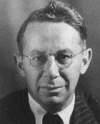
Born 20 Jul 1897; died 1 Aug 1996 at age 99.
Swiss chemist who, with Philip S. Hench and Edward C. Kendall, received the Nobel Prize for Physiology or Medicine in 1950 for his discoveries concerning hormones of the adrenal cortex, their structure and biological effects. With his co-workers, Reichstein accomplished the first isolation of four active hormones from the adrenal cortex, the first synthesis of one of them, the proof of the steroid nature of said hormones, and numerous details on the structure and properties of these important bodies. This made synthesis possible, leading to the creation of new medications.Name also spelled Tadeusz.
Swiss chemist who, with Philip S. Hench and Edward C. Kendall, received the Nobel Prize for Physiology or Medicine in 1950 for his discoveries concerning hormones of the adrenal cortex, their structure and biological effects. With his co-workers, Reichstein accomplished the first isolation of four active hormones from the adrenal cortex, the first synthesis of one of them, the proof of the steroid nature of said hormones, and numerous details on the structure and properties of these important bodies. This made synthesis possible, leading to the creation of new medications.Name also spelled Tadeusz.
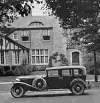
Born 20 Jul 1894; died 2 Jan 1974 at age 79.
U.S. automobile manufacturer, advocate of front-wheel-drive vehicles. Cord, still in his twenties when he arrived at the Auburn Automobile Company, had a talent for seeking and hiring young, innovative minds, full of drive and ambition. Cord was a brilliant, complex industrialist who helped personal and public transportation come of age. He is best known today for Auburn, Cord and Duesenberg automobiles, Cord's greatest talent may have been his unparalleled ability to construct an automotive empire durable enough to thrive during the darkest years of the Great Depression.Photo: 1929 Cord L-29 Sedan, America's first front-drive production car. Built by the Auburn Automobile Company, Auburn, Indiana.
U.S. automobile manufacturer, advocate of front-wheel-drive vehicles. Cord, still in his twenties when he arrived at the Auburn Automobile Company, had a talent for seeking and hiring young, innovative minds, full of drive and ambition. Cord was a brilliant, complex industrialist who helped personal and public transportation come of age. He is best known today for Auburn, Cord and Duesenberg automobiles, Cord's greatest talent may have been his unparalleled ability to construct an automotive empire durable enough to thrive during the darkest years of the Great Depression.Photo: 1929 Cord L-29 Sedan, America's first front-drive production car. Built by the Auburn Automobile Company, Auburn, Indiana.
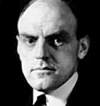
Born 20 Jul 1889; died 16 Jun 1971 at age 81.
(1st Baron) John Charles Walsham Reith was the first Director-General (1927-38) of the BBC, the British Broadcasting Corporation. Although educated as a civil engineer, he became its founding father. He rejected the American model of unregulated, commercial radio in the 1920s and the fledgling Soviet Union's rigidly controlled state system. Instead, Reith's vision was of an independent British broadcaster able to educate, inform and entertain the whole nation. Newscasts and programming were zealously maintained free from political interference and commercial pressure. Under his direction, broadcasting technology was rapidly developed, program schedules were enlarged, and the BBC enriched the nation's intellectual and cultural life. The reputation for reliability thus gained by the BBC endured long after Reith left the corporation. Remembering his spirit, an annual series of Reith lectures are delivered by invited leading figures using the radio medium to advance greater public understanding of their field. The lecture series celebrated its 60th anniversary in 2008.«
(1st Baron) John Charles Walsham Reith was the first Director-General (1927-38) of the BBC, the British Broadcasting Corporation. Although educated as a civil engineer, he became its founding father. He rejected the American model of unregulated, commercial radio in the 1920s and the fledgling Soviet Union's rigidly controlled state system. Instead, Reith's vision was of an independent British broadcaster able to educate, inform and entertain the whole nation. Newscasts and programming were zealously maintained free from political interference and commercial pressure. Under his direction, broadcasting technology was rapidly developed, program schedules were enlarged, and the BBC enriched the nation's intellectual and cultural life. The reputation for reliability thus gained by the BBC endured long after Reith left the corporation. Remembering his spirit, an annual series of Reith lectures are delivered by invited leading figures using the radio medium to advance greater public understanding of their field. The lecture series celebrated its 60th anniversary in 2008.«
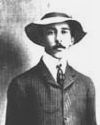
Born 20 Jul 1873; died 23 Jul 1932 at age 59.
Brazilian aeronaut who was an aviation pioneer, deemed the Father of Aviation by his countrymen. At the age of 18, Santos-Dumont was sent by his father to Paris where he devoted his time to the study of chemistry, physics, astronomy and mechanics. His first spherical balloon made its first ascension in Paris on 4 July 1898. He developed steering capabilities, and in his sixth dirigible on 19 Oct 1901 won the “Deutsch Prize,” awarded to the balloonist who circumnavigated the Eiffel Tower. He turned to heavier-than-air flight, and on 12 Nov 1906 his 14-BIS airplane flew a distance of 220 meters, height of 6 m. and speed of 37 km/h. to win the “Archdecon Prize.” In 1909, he produced his famous Demoiselle or Grasshopper monoplanes, the forerunners of the modern light plane.
Brazilian aeronaut who was an aviation pioneer, deemed the Father of Aviation by his countrymen. At the age of 18, Santos-Dumont was sent by his father to Paris where he devoted his time to the study of chemistry, physics, astronomy and mechanics. His first spherical balloon made its first ascension in Paris on 4 July 1898. He developed steering capabilities, and in his sixth dirigible on 19 Oct 1901 won the “Deutsch Prize,” awarded to the balloonist who circumnavigated the Eiffel Tower. He turned to heavier-than-air flight, and on 12 Nov 1906 his 14-BIS airplane flew a distance of 220 meters, height of 6 m. and speed of 37 km/h. to win the “Archdecon Prize.” In 1909, he produced his famous Demoiselle or Grasshopper monoplanes, the forerunners of the modern light plane.
Wings of Madness: Alberto Santos-Dumont and the Invention of Flight, by Paul Hoffman. - book suggestion.

Granite
Born 20 Jul 1863; died 26 Jun 1934 at age 70.
Jakob Johannes Sederholm was a Finnish geologist who pioneered the study of the Precambrian rocks of Finland. He was appointed geologist to the Geological Commission of Finland in 1888, where later he became its director (1893 to 1933). The Precambrian period ran from 3.96 billion to 570 million years ago. Precambrian rocks, called sheilds can only be found today in Africa, Europe, and North America. Not much of these rocks can be found, but the ones that are display evidence of having been altered by intense metamorphosism. The minerals that the sheilds are made of are generally granite, schist, or gneiss.
Jakob Johannes Sederholm was a Finnish geologist who pioneered the study of the Precambrian rocks of Finland. He was appointed geologist to the Geological Commission of Finland in 1888, where later he became its director (1893 to 1933). The Precambrian period ran from 3.96 billion to 570 million years ago. Precambrian rocks, called sheilds can only be found today in Africa, Europe, and North America. Not much of these rocks can be found, but the ones that are display evidence of having been altered by intense metamorphosism. The minerals that the sheilds are made of are generally granite, schist, or gneiss.
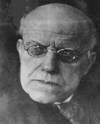
Born 20 Jul 1850; died 23 Dec 1934 at age 84.
Georg Elias Nathanael Müller was a German psychologist whose research work encompassed four principal areas: psychophysical method, memory, thought psychology, and color perception theory. The psychophysics anticipated the color theory, which was founded on Hering. The memory work led into the thought psychology, which was founded on Herbart and Külpe. Whereas earlier in his career his published works lacked original data, he sharpened his approach and became known as the methodologist of psychological experimentation. The experiments carried out in his lab were the gold standard of experimental results. He was directed one of the major centres of psychological research at the University of Göttingen (1881-1921).«
Georg Elias Nathanael Müller was a German psychologist whose research work encompassed four principal areas: psychophysical method, memory, thought psychology, and color perception theory. The psychophysics anticipated the color theory, which was founded on Hering. The memory work led into the thought psychology, which was founded on Herbart and Külpe. Whereas earlier in his career his published works lacked original data, he sharpened his approach and became known as the methodologist of psychological experimentation. The experiments carried out in his lab were the gold standard of experimental results. He was directed one of the major centres of psychological research at the University of Göttingen (1881-1921).«
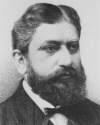
Born 20 Jul 1839; died 15 Aug 1884 at age 45. quotes
Julius Friedrich Cohnheim was a German pioneer of experimental pathology who helped determine the morbid changes that occur in animal tissue affected by inflammation, tuberculosis, and other disease states. He demonstrated that inflammation was an active dynamic process. He was the first to scientifically classify tumors the way we still do today (ex. carcinomas, fibroma, sarcoma). Cohnheim proposed the first great theory of cancer's origin, the theory of embryonal rests. He thought more germ cells are produced with a developing embryo than are needed to form any given part and that cancer's development involves this excess material.
Julius Friedrich Cohnheim was a German pioneer of experimental pathology who helped determine the morbid changes that occur in animal tissue affected by inflammation, tuberculosis, and other disease states. He demonstrated that inflammation was an active dynamic process. He was the first to scientifically classify tumors the way we still do today (ex. carcinomas, fibroma, sarcoma). Cohnheim proposed the first great theory of cancer's origin, the theory of embryonal rests. He thought more germ cells are produced with a developing embryo than are needed to form any given part and that cancer's development involves this excess material.
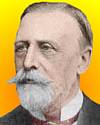
Born 20 Jul 1836; died 22 Feb 1925 at age 88. quotes
English physician who invented the short clinical thermometer (1866) to meet the need for a convenient method to follow the progress of a fever by temperature measurements at the bedside. Allbutt invented the pocket-size, six-inch clinical thermometer, which could take a temperature in five minutes. Before his improvement, the instruments used were a foot long, and required 20 minutes to measure a patient’s temperature. Allbutt also demonstrated that angina was caused by a narrowing of the coronary artery. This understanding was an important contribution to improving procedures to treat arterial diseases.« more
English physician who invented the short clinical thermometer (1866) to meet the need for a convenient method to follow the progress of a fever by temperature measurements at the bedside. Allbutt invented the pocket-size, six-inch clinical thermometer, which could take a temperature in five minutes. Before his improvement, the instruments used were a foot long, and required 20 minutes to measure a patient’s temperature. Allbutt also demonstrated that angina was caused by a narrowing of the coronary artery. This understanding was an important contribution to improving procedures to treat arterial diseases.« more
Sir Clifford Allbutt, by Alexander G. Bearn. - book suggestion.
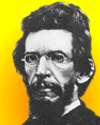
Born 20 Jul 1820; died 27 Feb 1867 at age 46. quotes
American statistician and editor, who is regarded as a pioneer of economic statistics for the U.S. Census Office. As a young man, he moved in 1820 to New Orleans, and there began publishing his periodical, DeBow’s Review, on business and the economy. By 1848, he became professor of commerce and statistics at the University of Louisiana, and was appointed some months later to head Louisiana’s new Bureau of Statistics. President Franklin Pierce turned to DeBow to be Superintendent (1853-55) of the Seventh U.S. Census, for which he produced a full report, and also Statistical View of the United States, a summary subsequently known as the Compendium, which was popular for the usefulness of its economic statistics.«
American statistician and editor, who is regarded as a pioneer of economic statistics for the U.S. Census Office. As a young man, he moved in 1820 to New Orleans, and there began publishing his periodical, DeBow’s Review, on business and the economy. By 1848, he became professor of commerce and statistics at the University of Louisiana, and was appointed some months later to head Louisiana’s new Bureau of Statistics. President Franklin Pierce turned to DeBow to be Superintendent (1853-55) of the Seventh U.S. Census, for which he produced a full report, and also Statistical View of the United States, a summary subsequently known as the Compendium, which was popular for the usefulness of its economic statistics.«
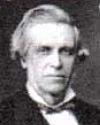
Born 20 Jul 1816; died 29 Mar 1892 at age 75.
(1st Baronet) was an English surgeon and histologist who obtained a European reputation for medical research long before he was thirty years of age. He described (1842) the histologic structure of the nephron, the functional unit of the kidney, where the process of of urine takes place as a by-product of blood filtration that is carried on in the kidney. The "Bowman's capsule" of the kidney carries his name. The kidney contains millions of very tiny sacs called Bowman's capsules that filter blood to produce urine. He also made important discoveries concerning the structure and function of the eye and of striated muscle. He collaborated with Todd in writing The Physiological Anatomy.
(1st Baronet) was an English surgeon and histologist who obtained a European reputation for medical research long before he was thirty years of age. He described (1842) the histologic structure of the nephron, the functional unit of the kidney, where the process of of urine takes place as a by-product of blood filtration that is carried on in the kidney. The "Bowman's capsule" of the kidney carries his name. The kidney contains millions of very tiny sacs called Bowman's capsules that filter blood to produce urine. He also made important discoveries concerning the structure and function of the eye and of striated muscle. He collaborated with Todd in writing The Physiological Anatomy.
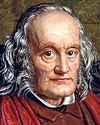
Born 20 Jul 1804; died 18 Dec 1892 at age 88. quotes
English zoologist, anatomist and palaeontologist who is remembered for contributions to the study of fossil animals but firm opposition to Charles Darwin’s views. He created the word dinosaur meaning “terrible reptile” (1841). Owen melded the anatomical work of Frenchmen Georges Cuvier and Étienne Geoffroy Saint-Hilaire, and others, with German philosophy on the subject to form a “higher” transcendental anatomy to better describe the morphological laws of animal development. He coined terms, such as homology, still used in anatomy and evolutionary biology. In 1856, he became Superintendent of the British Museum of Natural History. He was the impetus for building a new museum in South Kensington for its burgeoning collection.«Image: Detail from portrait by William Holman Hunt. more
English zoologist, anatomist and palaeontologist who is remembered for contributions to the study of fossil animals but firm opposition to Charles Darwin’s views. He created the word dinosaur meaning “terrible reptile” (1841). Owen melded the anatomical work of Frenchmen Georges Cuvier and Étienne Geoffroy Saint-Hilaire, and others, with German philosophy on the subject to form a “higher” transcendental anatomy to better describe the morphological laws of animal development. He coined terms, such as homology, still used in anatomy and evolutionary biology. In 1856, he became Superintendent of the British Museum of Natural History. He was the impetus for building a new museum in South Kensington for its burgeoning collection.«Image: Detail from portrait by William Holman Hunt. more
Richard Owen: Biology without Darwin, by Nicolaas A. Rupke. - book suggestion.

Gawthorpe Hall
Born 20 Jul 1804; died 26 May 1877 at age 72.
(1st Baronet, original surname Kay) was an English physician, public-health reformer, and chief founder of the English system of publicly financed elementary education. A medical graduate of Edinburgh University, he was also a cholera doctor in Manchester, a pioneer social scientist and town planner, an assistant Poor Law commissioner, the manager of a large landed estate (Gawthorpe Hall), a would-be politician and a novelist. His surname, Kay, changed in 1842 upon marriage to Janet Shuttleworth. His turbulent political, personal and family life is fascinating in itself and, in addition, sheds light on many aspects of nineteenth century social history.
(1st Baronet, original surname Kay) was an English physician, public-health reformer, and chief founder of the English system of publicly financed elementary education. A medical graduate of Edinburgh University, he was also a cholera doctor in Manchester, a pioneer social scientist and town planner, an assistant Poor Law commissioner, the manager of a large landed estate (Gawthorpe Hall), a would-be politician and a novelist. His surname, Kay, changed in 1842 upon marriage to Janet Shuttleworth. His turbulent political, personal and family life is fascinating in itself and, in addition, sheds light on many aspects of nineteenth century social history.

Died 20 Jul 2007 at age 89 (born 20 Apr 1918).
Swedish physicist who shared (with Nicolaas Bloembergen and Arthur L.Schawlow) the 1981 Nobel Prize for Physics for “his contribution to the development of high-resolution electron spectroscopy.” He analyzed the resulting electrons that were knocked out from the interior of an atom by a high energy X-ray photons. Thus he could measure the binding energy of atomic electrons with higher accuracy than was previusly possible. Furthermore, since that binding energy was somewhat dependent upon the chemical environment of the atom, this provided a new tool of chemical analysis—ESCA (Electron Spectroscopy for Chemical Analysis). ESCA is now used by hundreds of laboratories around the world to investigate surface reactions, such as corrosion or catalytic reactions, and others also of great important in industrial chemistry. His father, Karl Manne Georg Siegbahn, received the 1924 Nobel Prize in Physics.«
Swedish physicist who shared (with Nicolaas Bloembergen and Arthur L.Schawlow) the 1981 Nobel Prize for Physics for “his contribution to the development of high-resolution electron spectroscopy.” He analyzed the resulting electrons that were knocked out from the interior of an atom by a high energy X-ray photons. Thus he could measure the binding energy of atomic electrons with higher accuracy than was previusly possible. Furthermore, since that binding energy was somewhat dependent upon the chemical environment of the atom, this provided a new tool of chemical analysis—ESCA (Electron Spectroscopy for Chemical Analysis). ESCA is now used by hundreds of laboratories around the world to investigate surface reactions, such as corrosion or catalytic reactions, and others also of great important in industrial chemistry. His father, Karl Manne Georg Siegbahn, received the 1924 Nobel Prize in Physics.«

Died 20 Jul 1937 at age 63 (born 25 Apr 1874). quotes
Marchese Guglielmo Marconi was an Italian electrical engineer and inventor who invented the wireless telegraph (1935) known today as radio. Nobel laureate (1909). In 1894, Marconi began experimenting on the “Hertzian Waves,” the radio waves Heinrich Hertz had first produced in his laboratory a few years earlier. Lacking support from the Italian Ministry of Posts and Telegraphs, Marconi turned to the British Post Office. Encouraging demonstrations in London and on Salisbury Plain followed. Marconi obtained the world's first patent for a system of wireless telegraphy, in 1897, and opened the world's first radio factory at Chelmsford, England in 1898. In 1900 he took out his famous patent No. 7777 for “tuned or syntonic telegraphy.”
Marchese Guglielmo Marconi was an Italian electrical engineer and inventor who invented the wireless telegraph (1935) known today as radio. Nobel laureate (1909). In 1894, Marconi began experimenting on the “Hertzian Waves,” the radio waves Heinrich Hertz had first produced in his laboratory a few years earlier. Lacking support from the Italian Ministry of Posts and Telegraphs, Marconi turned to the British Post Office. Encouraging demonstrations in London and on Salisbury Plain followed. Marconi obtained the world's first patent for a system of wireless telegraphy, in 1897, and opened the world's first radio factory at Chelmsford, England in 1898. In 1900 he took out his famous patent No. 7777 for “tuned or syntonic telegraphy.”
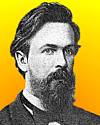
Died 20 Jul 1922 at age 66 (born 14 Jun 1856).
Russian mathematician who helped to develop the theory of stochastic processes, especially those called Markov chains, sequences of random variables in which the future variable is determined by the present variable but is independent of the way in which the present state arose from its predecessors. (For example, the probability of winning at the game of Monopoly can be determined using Markov chains.) His work based on the study of the probability of mutually dependent events has been developed and widely applied to the biological and social sciences.
Russian mathematician who helped to develop the theory of stochastic processes, especially those called Markov chains, sequences of random variables in which the future variable is determined by the present variable but is independent of the way in which the present state arose from its predecessors. (For example, the probability of winning at the game of Monopoly can be determined using Markov chains.) His work based on the study of the probability of mutually dependent events has been developed and widely applied to the biological and social sciences.
Died 20 Jul 1888 at age 40 (born 25 Jul 1847).
German physician.
German physician.
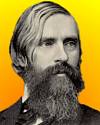
Died 20 Jul 1870 at age 42 (born 22 May 1828).
Albrecht Friedrich Wilhelm Ernst von Gräfe was a German eye surgeon, who is regarded as a founder of scientific opthalmology. He was also an authority in diseases of the nerve and brain. He diagnosed sudden visual loss due to retinal artery embolism, optic retinitis and was one of the first to treat glaucoma successfully. He described a large number of new findings, among them stase papillas in brain tumors, retardation of the eyelid in Basedow's disease and introduced a new operation for cataract - iridictomy. In his short career (he died at age 42), von Gräfe performed more than 10,000 eye operations, and was undoubtedly the most important ophthalmologist of the 19th century.«
Albrecht Friedrich Wilhelm Ernst von Gräfe was a German eye surgeon, who is regarded as a founder of scientific opthalmology. He was also an authority in diseases of the nerve and brain. He diagnosed sudden visual loss due to retinal artery embolism, optic retinitis and was one of the first to treat glaucoma successfully. He described a large number of new findings, among them stase papillas in brain tumors, retardation of the eyelid in Basedow's disease and introduced a new operation for cataract - iridictomy. In his short career (he died at age 42), von Gräfe performed more than 10,000 eye operations, and was undoubtedly the most important ophthalmologist of the 19th century.«
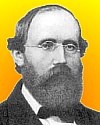
Died 20 Jul 1866 at age 39 (born 17 Sep 1826). quotes
Georg Friedrich Bernhard Riemann was a German mathematician whose work widely influenced geometry and analysis. In addition, his ideas concerning geometry of space had a profound effect on the development of modern theoretical physics and provided the foundation for the concepts and methods used later in relativity theory. He clarified the notion of integral by defining what we now call the Riemann integral. He was an original thinker and a host of methods, theorems and concepts are named after him. Riemann suffered from tuberculosis and he spent his last years in Italy in an attempt to improve his health.
Georg Friedrich Bernhard Riemann was a German mathematician whose work widely influenced geometry and analysis. In addition, his ideas concerning geometry of space had a profound effect on the development of modern theoretical physics and provided the foundation for the concepts and methods used later in relativity theory. He clarified the notion of integral by defining what we now call the Riemann integral. He was an original thinker and a host of methods, theorems and concepts are named after him. Riemann suffered from tuberculosis and he spent his last years in Italy in an attempt to improve his health.
Prime Obsession: Bernhard Riemann and the Greatest Unsolved Problem in Mathematics, by John Derbyshire. - book suggestion.
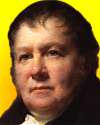
Died 20 Jul 1819 at age 71 (born 10 Mar 1748). quotes
Scottish mathematician, physicist, and geologist who is remembered for his axiom that two intersecting straight lines cannot both be parallel to a third straight line. His Illustrations of the Huttonian Theory of the Earth (1802) gave strong support to James Hutton's principle of uniformitarianism, essential to a proper understanding of geology. Playfair was the first scientist to recognise that a river cuts its own valley, and he cited British examples of the gradual, fluvial origins of valleys, to challenge the catastrophic theory (based on the Biblical Flood in Genesis) that was still widely accepted. He was also the first to link the relocation of loose rocks to the movement of glaciers. Playfair published texts on geometry, physics, and astronomy.«
Scottish mathematician, physicist, and geologist who is remembered for his axiom that two intersecting straight lines cannot both be parallel to a third straight line. His Illustrations of the Huttonian Theory of the Earth (1802) gave strong support to James Hutton's principle of uniformitarianism, essential to a proper understanding of geology. Playfair was the first scientist to recognise that a river cuts its own valley, and he cited British examples of the gradual, fluvial origins of valleys, to challenge the catastrophic theory (based on the Biblical Flood in Genesis) that was still widely accepted. He was also the first to link the relocation of loose rocks to the movement of glaciers. Playfair published texts on geometry, physics, and astronomy.«

In 1995, Inventure Place, home of the National Inventors Hall of Fame, is dedicated in Akron, Ohio (opens to the public 3 days later). The National Inventors Hall of Fame was established in 1973 by the U.S. Patent and Trademark Office and what is now the National Council of Intellectual Property Law Associations. The board of trustees of the National Inventors Hall of Fame decided on 3 Sep 1987 to relocate in Akron with a new building. According to their literature, "Inventure Place is dedicated to the creative process. We want to inspire you: through hands-on exhibits, interactive programs, special events, and every other fantastic experience we can dream up. At Inventure Place you are an artist, scientist, inventor, musician, tinkerer, film maker, discoverer, and creative genius. Discover the Inventor in You!"

In 1976, America’s Viking I Lander spacecraft, launched 20 Aug 1975, made its successful, first-ever landing on Mars at Chryse Planitia, and began transmitting pictures. Later, a robot arm that could scoop up samples of material and deposit them into on-board experiments, investigated the hint of life on Mars. Both weathered top soil and deeper soil samples were tested. The image shows Chryse Planitia looking NW over the Viking 1 Lander. An antenna is at upper right. The wide, low plain is covered with large rocks, loose sand and dust. The image was taken on 30 August 1976, a little over a month after landing. Pictures from the mission included views of the Mars surface taken from the Viking 1 Orbiter from space.

In 1969, Apollo XI astronauts Neil Armstrong and Edwin "Buzz" Aldrin became the first men to walk on the moon, after their lunar module separated from the command module and landed on the lunar surface at 09:18 GMT/4:18 EDT on the Sea of Tranquillity. Neil Armstrong and Edwin Aldrin establish Tranquility Base while Michael Collins orbited above. Armstrong stepped on the lunar surface at 10:56 ET and proclaimed, "That's one small step for a man, one giant leap for mankind." Internationally, nearly 700 million television viewers witnessed the event live as it happened.«[Image: Astronaut Edwin Aldrin setting up a seismometer on the lunar surface. Neil Armstrong took this picture, which shows the Lunar Module in the background.]
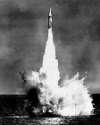
In 1960, the submerged USS George Washington off the coast of Cape Canaveral, Fla., executed the first test launch of a pair of Polaris missile from a submarine at sea. The target was more than 1,100 miles away. The Polaris has a designed range of 1,500 nautical miles and is capable of being launched when the submarine is hidden far below the surface. The George Washington was the first Fleet Balistic Missile submarine. Fitted with 16 tubes for Polaris A1 missile, the submarine was commissioned 30 Dec 1959, and de-commissioned 24 Jan 1985. The "Georgefish" and her crews made 55 deterrence patrols in both the Atlantic and Pacific oceans in her 25 year career.




